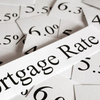Sustainable Housing and Green Mortgages

Green Mortgages: Financing Eco-Friendly Homes for a Greener Future
In a world increasingly concerned with environmental sustainability, the real estate and mortgage industries are witnessing a significant shift toward more eco-friendly practices. One of the key players in this movement is the emergence of "Green Mortgages." These innovative financial products are designed to incentivize and support homeowners who make environmentally conscious choices in their housing options.
What Are Green Mortgages?
Green mortgages go beyond traditional home financing by encouraging borrowers to choose properties that meet specific eco-friendly criteria. These criteria often revolve around energy efficiency, renewable energy installations, and adherence to green building standards. By opting for a green mortgage, borrowers can access various financial benefits and incentives, making it an attractive option for those committed to sustainability.
One of the primary attractions of green mortgages is the array of incentives offered to borrowers. These may include lower interest rates, reduced closing costs, or even additional loan amounts to finance energy-efficient upgrades. The goal is to make environmentally responsible housing choices more accessible and financially appealing.
Green mortgages also often tie into recognized green building certification programs, such as LEED or local environmental standards. These certifications validate that a property meets specific sustainability benchmarks, providing borrowers and lenders alike with confidence in the eco-friendly features of the home.
Examples of Sustainable Real Estate
While each sustainable mortgage may be slightly different than the next, here are some common categories of homes that fall under the sustainable real estate umbrella:
- Energy-Efficient Homes: Some sustainable mortgages incentivize the purchase or construction of energy-efficient homes. Borrowers may receive preferential terms if their homes meet certain energy efficiency standards, such as certification from green building programs.
- Renewable Energy Installations: Financing options may be available for homes that incorporate renewable energy sources, such as solar panels or wind turbines. These installations contribute to reducing the carbon footprint of the property.
- Green Building Standards: Homes built or renovated according to specific green building standards may qualify for sustainable mortgage programs. These standards often focus on resource efficiency, water conservation, and overall environmental impact.
- Socially Responsible Criteria: In addition to environmental considerations, some sustainable mortgage programs may include social responsibility criteria . This could involve supporting affordable housing initiatives, community development, or projects that address social equity concerns.
- Carbon Offsetting Programs: Some sustainable mortgage programs may incorporate carbon offsetting initiatives. Lenders may invest in projects that help offset the carbon emissions associated with the home, contributing to a more sustainable overall footprint.
Energy Efficiency Rebates and Mortgage Benefits
Beyond the financing of eco-friendly homes, sustainable mortgages may also offer additional perks related to energy efficiency. Many lenders collaborate with governmental and utility programs to provide energy efficiency rebates to homeowners. These rebates can be applied toward mortgage payments or used to fund further energy-saving improvements.
For instance, some sustainable mortgage programs allow borrowers to include the cost of energy-efficient upgrades in their mortgage. This means that homeowners can finance improvements such as solar panels, insulation, or high-efficiency HVAC systems while benefiting from the favourable terms of their green mortgage.
While the initial investment in energy-efficient upgrades may seem daunting, the long-term cost savings can be substantial. Lower utility bills and potential rebates contribute to a more cost-effective homeownership experience, aligning financial well-being with environmentally conscious living.
CMHC Green Home Program
The CMHC Green Home Program allows Canadians to apply for a 25% premium refund on their CMHC insurance if they meet certain criteria. As of the publication of this guide, in order to be eligible, a home must either:
- Have a GHG rating (tonnes per year) that falls within the top 15% of all housing stock in terms of the best GHG rating (lowest)
- Properties with an energy consumption rating (gigajoules/year) that is at least 20% lower than that of “A Typical New House”
The Rise of Eco-Conscious Homebuying and Financing
As environmental awareness grows, so does the demand for sustainable housing options. Homebuyers across Canada are increasingly prioritizing energy efficiency, green building practices, and eco-friendly features when searching for their dream homes. This shift in consumer preferences is influencing not only the real estate market but also the mortgage industry.
Lenders are responding to the demand for sustainable housing solutions by developing and promoting green mortgage products. These products empower consumers to make a positive impact on the environment while enjoying financial benefits that support their commitment to eco-conscious living.
The rise of eco-conscious homebuying and financing furthermore represents a collaborative effort between individuals, lenders, and the broader community. By choosing green mortgages and sustainable housing options, homeowners contribute to a collective movement toward a greener, more environmentally friendly future.
As the momentum for sustainable practices continues to grow, the combination of environmentally conscious homebuying and innovative mortgage solutions paves the way for a more sustainable and resilient housing market . To get ahead of this rapidly changing market, having a trusted mortgage broker on your side can be an invaluable asset. Our Clover Mortgage team works with a network spanning over 80 different lenders, many of which offer sustainable mortgages. Contact us to book your free consultation today!
FAQ
What is a sustainable mortgage?
A sustainable mortgage typically refers to a home loan that is associated with environmentally and socially responsible practices. The concept of sustainable mortgages aligns with the broader goal of promoting sustainability and addressing environmental and social concerns in the real estate and finance sectors. Key features of sustainable mortgages may include: energy-efficient retrofits, renewable energy sources, green building materials, and more.
It's important to note that the specific features and criteria of sustainable mortgages can vary among lenders and regions. As sustainability becomes an increasingly important consideration in various industries, including real estate and finance, the availability and structure of sustainable mortgage products may evolve. Borrowers interested in sustainable mortgages should inquire with lenders about the specific terms and criteria associated with such loans.
What happens to CMHC insurance when you sell?
The Canada Mortgage and Housing Corporation (CMHC) provides mortgage loan insurance to lenders in Canada to protect them in case borrowers default on their mortgage payments. CMHC insurance is typically required for homebuyers who make a down payment of less than 20% of the purchase price of their home.
When you sell a home for which you had a CMHC-insured mortgage, the CMHC insurance is not transferred to the new owner. Instead, the CMHC insurance remains associated with the original mortgage and protects the lender from any financial losses in case of default.
Here's what typically happens when you sell a home with a CMHC-insured mortgage:
- Payout of Mortgage: When you sell your home, the proceeds from the sale are used to pay off the existing mortgage, including any outstanding CMHC insurance premiums.
- Release of CMHC Insurance: Once the mortgage is paid off, the CMHC insurance is no longer applicable to that specific mortgage. The insurance coverage is terminated, and the file is closed.
- New Mortgage for the Buyer: If the buyer requires a mortgage to purchase the property, they will need to secure their own mortgage financing. Whether or not they need CMHC insurance would depend on the size of their down payment. If the buyer makes a down payment of less than 20%, they might need to obtain CMHC insurance for their new mortgage.





